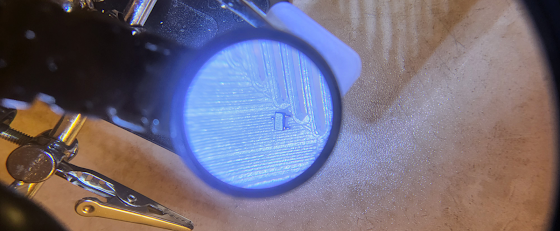- Go to a computer without any printer installed, login as administrator and install all the printers you need to deploy.
- download & run UTFG://printmig.exe go to Actions and click on Backup - save the cab file with the name printers.cab
- download UTFG://ListComps.exe and run listcomps.exe /D:MY_DOMAIN >> comps.txt
(replace MY_DOMAIN with the domain you're in) edit the file comps.txt in order to remove unwanted computers, servers...
- in a command prompt type the following line: for /F %r in (comps.txt) do printmig.exe -i -r printers.cab \\%r
- now watch printmig spawning an instance for every computer and pushing the drivers to all of them
- enjoy a beer
if before you want to remove ALL the old network printers you can use my (somehow pretty drastic) method of deleting.
Add this .vbs script to the user login or use psexec.exe to launch it:
------------------BEGIN HERE--------------------
' removepr.vbs - Windows NT Logon Script.
' VBScript - Silently remove ALL network printers
' -----------------------------------------------------------------------'
Const ForReading = 1
Set objFSO = CreateObject("Scripting.FileSystemObject")
Set objNet = CreateObject("WScript.Network")
Set WshShell = CreateObject("WScript.Shell")
Set wmiLocator = CreateObject("WbemScripting.SWbemLocator")
Set wmiNameSpace = wmiLocator.ConnectServer(objNet.ComputerName, "root\default")
Set objRegistry = wmiNameSpace.Get("StdRegProv")
Const HKEY_CLASSES_ROOT = &H80000000
Const HKEY_CURRENT_USER = &H80000001
Const HKEY_LOCAL_MACHINE = &H80000002
Const HKEY_USERS = &H80000003
strComputer = "."
' If this script already run once for this user, then EXIT
userprrf = WshShell.Environment("PROCESS")("UserProfile")
'wscript.Echo userprrf
If (objFSO.FileExists(userprrf & "\sctwashere.txt")) Then
Wscript.Quit
Else
blah = "let's have some fun"
End If
' Deletes RegistryKey with all subkeys in Network printers
sPath = "Printers\Connections"
lRC = DeleteRegEntry(HKEY_CURRENT_USER, sPath)
Function DeleteRegEntry(sHive, sEnumPath)
' Attempt to delete key. If it fails, start the subkey enumration process.
lRC = objRegistry.DeleteKey(sHive, sEnumPath)
' The deletion failed, start deleting subkeys.
If (lRC <> 0) Then
' Subkey Enumerator
On Error Resume Next
lRC = objRegistry.EnumKey(HKEY_CURRENT_USER, sEnumPath, sNames)
For Each sKeyName In sNames
If Err.Number <> 0 Then Exit For
lRC = DeleteRegEntry(sHive, sEnumPath & "\" & sKeyName)
Next
On Error Goto 0
' At this point we should have looped through all subkeys, trying to delete the key again.
lRC = objRegistry.DeleteKey(sHive, sEnumPath)
End If
End Function
'Now let's recreate only the "root" Key we deleted before
objRegistry.CreateKey HKEY_CURRENT_USER,sPath
'Tell something to the user
'with createobject("wscript.shell")
' .popup "All Network Printers are now erased.",1, "Printers Manager"
'end with
------------------END HERE--------------------
In the void is virtue, and no evil. Wisdom has existance, principle has existance, the Way has existance, spirit is nothingness.
Image

Search This Blog
Monday, December 07, 2015
Deploy local printers to Windows XP
Subscribe to:
Post Comments (Atom)
No comments:
Post a Comment